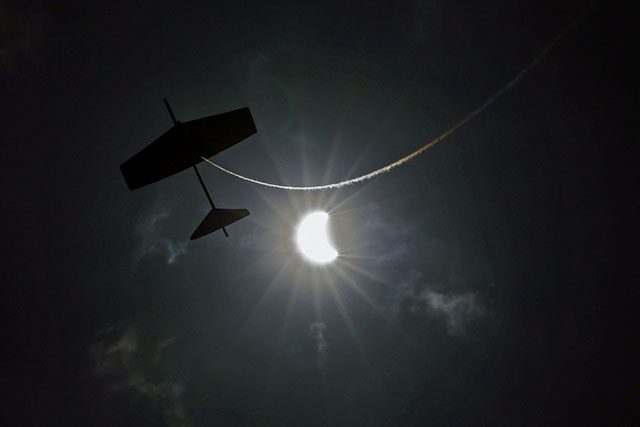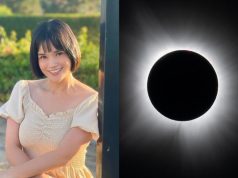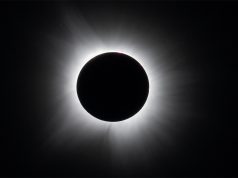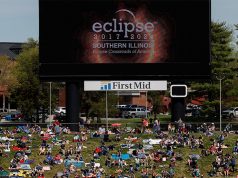
The annular solar eclipse, also called the “ring of fire” eclipse, was fully visible in Mindanao and partially visible in other parts of the country on Thursday afternoon.
An annular solar eclipse is when the moon passes in front of the sun, leaving the latter’s outer edges visible through a formation dubbed as the “ring of fire.”
It was best viewed in Balut and Batulaki, Sarangani Island and Davao Occidental.
The phenomenon reached its peak around 2:31 p.m. and reportedly ended at around 4:00 p.m.
The next annular solar eclipse to be visible in the Philippines will occur on February 28, 2063.
On social media, Filipinos presented how the rare phenomenon appeared in the sky in different forms.
Twitter user @JoanaJoaquin30 captured the solar eclipse with clouds creating a dramatic effect around it using a smartphone.
OY! Pwede na, kahit papaano e, naispatan ko. See you sa 2063 kung buhay pa ko n'yan. 😍❤️ #AnnularSolarEclipse #solareclipse2019
Gamit ang phone ng tatay ko. Huawei P8 Lite. pic.twitter.com/EIfyFFfs55
— Don Diego Baltazar Silang y Andaya 🌑 (@JoanaJoaquin30) December 26, 2019
Twitter user @MatthewSCuyugan showed the phenomenon in a dark background with clouds blurring the view.
Maximum Eclipse. Jusko ang ulappp. 😆
Visibility: 60%
Time: 2:19:20 p.m.
📸: Nikon D5000
Aperture: f/5.6
ISO: 1000
ET: 1/2000s#PartialSolarEclipse #SolarEclipse #solareclipse2019 #AnnularSolarEclipse #AnnularEclipse pic.twitter.com/TPPx0f4yJ3— Matthew S. Cuyugan (@MatthewSCuyugan) December 26, 2019
Twitter user @_jaycel shared his own shots of the solar eclipse that he saw with his own “naked eyes,” although the practice is dangerous as it could ruin eyesight.
Unlike the shots of other users, his pictures were blended with colors that were not black or white, although he could’ve used filters.
Currently enjoying the annular solar eclipse! 🌒
Yung nakita ko siya mismo using my naked eyes! 😱💕 Visible pag cloudy. #solareclipse2019 pic.twitter.com/P6Ws6vNA7q
— Jayce™ (@__jaycel) December 26, 2019
For Twitter user @atomdatcom, the solar eclipse was captured on its “beginning” stages using a smartphone with a solar filter.
It was one of the closest shots of the annular eclipse on local Twitter so far.
The beginning of the ring of fire eclipse. Next one in 44 years. Shot on iPhone with a solar filter. #solareclipse2019 pic.twitter.com/rxDBQ8P219
— A. Yango (@atomdatcom) December 26, 2019
A solar eclipse is a celestial event where the moon casts a shadow over the earth when it blocks the sun during an orbit.
It is categorized into three types: A total solar eclipse, a partial solar eclipse and an annular solar eclipse.
Solar eclipses occur once every 18 months.
It used to be considered a bad omen during ancient times but nowadays, the phenomenon is continuously studied, observed and celebrated.









